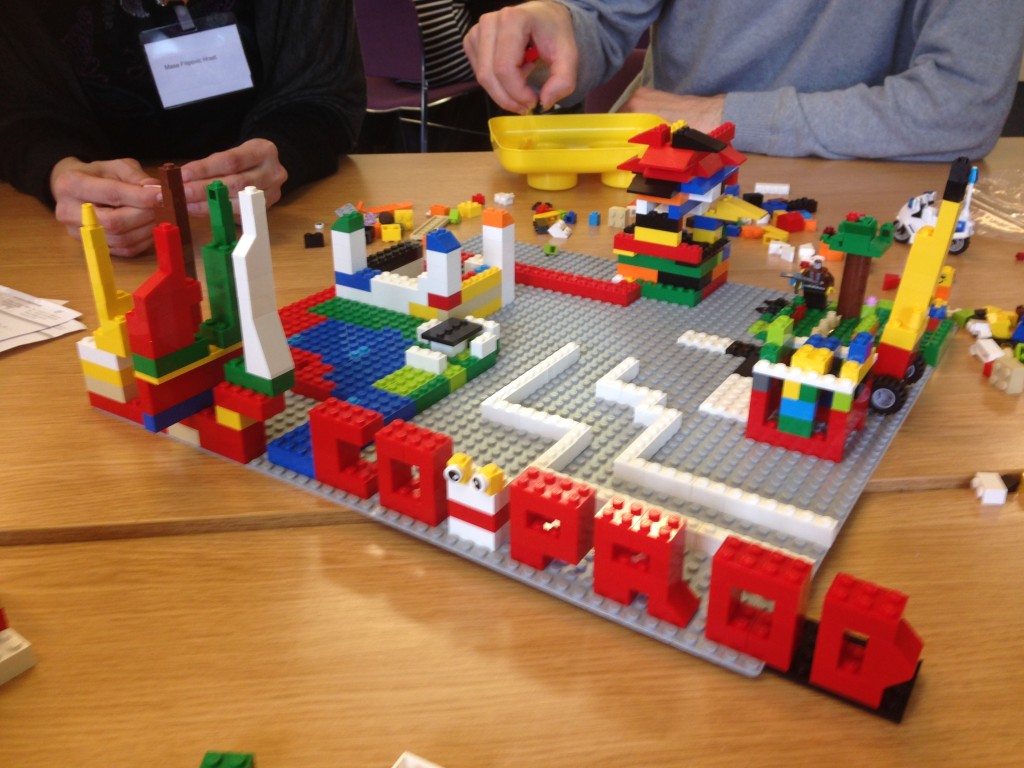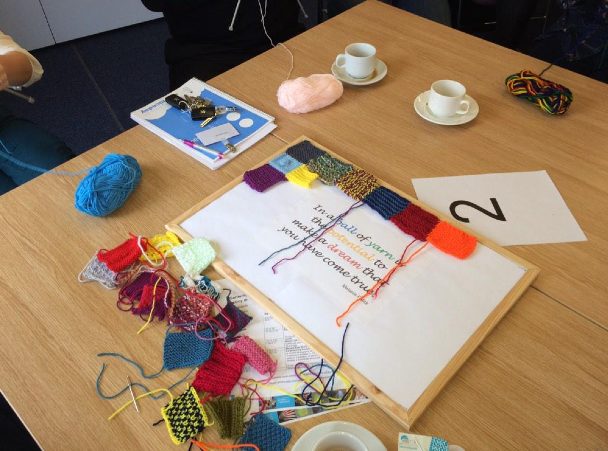Contemporary Coproduction: theory policy and practice
Wednesday 18th March, Iris Murdoch Building, University of Stirling
A reflection on the day
The day started well for me with a morning walk through the rather picturesque grounds of the Stirling University Campus. It sits in a prime location at the bottom of the Ochil Hills, and it looked particularly nice on a crisp, sunny morning. This stroll was followed by arrival and a welcome hot coffee, while happily bumping into Claire Lightowler of the Centre for Youth and Criminal Justice on the way into the room.
Richard Simmons introduced the day as we got settled and we went straight into a couple of presentations by folk from the University of Birmingham. Catherine Needham explored what we consider as evidence, reminding us of the importance and value of lived experience and practice wisdom, as well as the more formalised evidence we are all perhaps more familiar with. Two things really hit home to me here. Firstly, coproduction must be additive and not substitutive. In other words – we must add value from coproducing, we can’t just fill gaps. Secondly, processes and ways of coproduction can’t just be copied from context to context. These processes shouldn’t be replicated but they should be assimilated into different places.
Next up was Tony ‘Tornado’ Bovaird from INLOGOV and Governance International. He gave a fantastic overview of where value sits in our society – is this in the formalised economy, or is it in the informal and social interactions that we take part in every day? We must re-balance service outcomes, personal outcomes and social capital outcomes. He also highlighted that we have a rich resource base in this country and it is not a lack of resources that we suffer from but a resource matching problem. We need to work with who is up for working together and not ignore the real strengths that exist.
After the break, when I had the chance to talk to Claire Brynner of What Works Scotland, we had two more presentations around the theme of ‘disrupting coproduction’. The first from Julie Christie who is exploring dementia in resilience in her PhD project. She ended with point that really seemed to resonate with the room – is coproduction done with active citizens or does coproduction help in activating citizens? Do the loudest voices get heard? Are these the white middle classes with loudspeakers and a voice this is disproportionately heard by those in power (a point highlighted by Peter Matthews)? Julia Fitzpatrick from Horizon Housing Association was our final speaker of the day and made some extremely pertinent points. The one that hit home with me was that we must not “equate a place at a table with involvement” – there are always power issues being played out and we must recognise these, and address them. In the following discussion, power came out as a central theme, and there was a reminder given that coproduction should be about increasing social justice and equality – just as public services should be.
After our impressive lunch of bento boxes and fruit we started enacting a bit more coproduction during the day. We went into a World Cafe with groups moving about the room. Each group started with a question and the discussion was recorded by a scribe. As the groups moved round every ten minutes, the scribe stayed put. Every time the group did move on, they left a provocative question for the incoming group. I scribed and you can see the direction of the discussion below:
| Questions | Broad discussion journey… |
| Group 1 – Opening questionCan coproduction allow for resources to be redistributed to create more equitable outcomes? |
|
| Group 2 – Prompt questionDoes coproduction help people frame and influence issues that are important to them? |
|
| Group 3 – prompt questionCan we use coproduction to become a more caring society, increase empathy, and to understand each others problems and perspectives? |
|
| Final question
How do you address different perspectives, motivations and values in coproduction? |
… |
After hearing from the other group scribes we had a quick break followed by different engaging activities designed to prompt discussion and group cohesion. My own group had a wide discussion around coproduction and began to build up a mini-lego community (see below). We actually started this hour session by getting to know each other and exploring what each other had to say, as opposed to beginning with a specific question. I found having the lego in front of us, and building our own little projects, meant there was more time for us to sit in comfortable silences and take time in our interactions. It was only in the last ten minutes that we started physically putting all our creations on the board and linking these up with lego pathways. We praised and prodded each others creations, ranging from an allotment/garden (top right), to the oriental/ MC Escher building (top middle), to the unicorn towers (middle left – unicorn is unfortunately hidden), to the burrowing octopus of cause/effect tentacles (bottom left), to the rather prosaic co-prod letters (which was my own stilted creation!) 
We then heard what the other groups had been up to, with one using a circle to subvert the Brooks Newmark quote: “The important thing charities should be doing is sticking to their knitting and doing the best they can to promote their agenda, which should be about helping others.” Experienced knitters and complete novices came together to chat and support each other to produce a wonderful collage of squares (see below).
In the following discussion we started to explore themes of creativity, improvisation, innovation and support that had really exemplified some of the aspects that were coming through this final session.
Thanks to everyone there on the day, Stirling Uni, and especially Peter Matthews () for organising the day – let’s keep on prodding each other to work in more effective and thought provoking ways.
Cheers,
Stuart Muirhead, IRISS

Thanks Stuart for such a great summary of the day!
I also thoroughly enjoyed the Contemporary Coproduction event.
Coming from a user-centred design background, I was particularly interested in understanding the difference between co-design and co-production, if indeed there is one at all?
Catherine Needham’s presentation helped me realise that this question isn’t really relevant:
• The ambiguity around the term ‘co-production’ doesn’t help us!
• Whether we are co-designing or co-producing, the values behind what we are trying to achieve need to be explicit for the people engaging in the project and those leading the project
I also really enjoyed Julia Fitzpatrick from Horizon Housing’s thoughts on addressing power balances in co-production. Starting without an agenda and working with the group to co-produce the brief enables everyone to participate equally and ultimately produces truly user led results.
In the afternoon, I joined the knitting group – an activity I would happily do any Wednesday afternoon! The group very quickly started chatting, those that could knit helped others and as we worked to knit squares that would be joined together, there was a real feeling that we were working together.
Thanks very much for an enjoyable, insightful day!